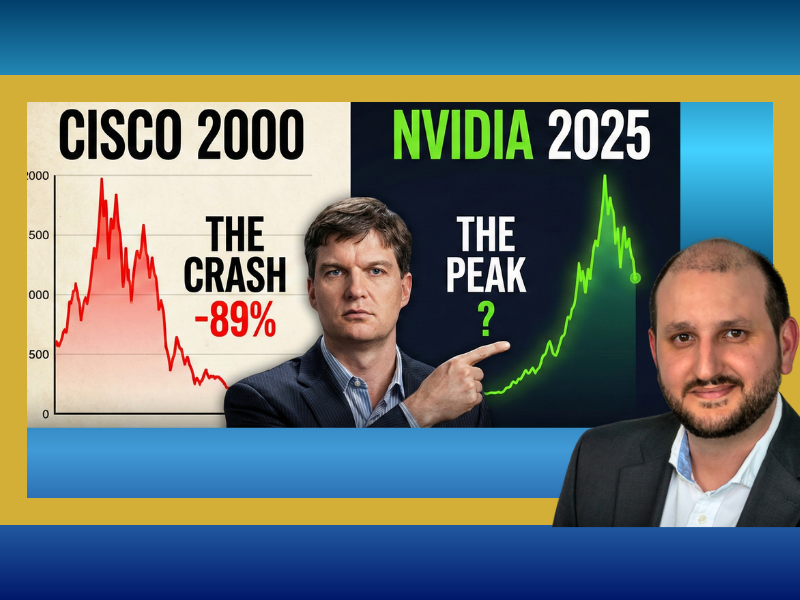The Great Disconnect: 3 More Signs the Market's Foundation is Cracking
- Nico DE BONY
.jpg/v1/fill/w_320,h_320/file.jpg)
- Aug 17
- 3 min read
Updated: Aug 19

On the surface, the market appears confident, hitting new highs with enthusiasm. But underneath, the real economy is telling a much different story. This growing disconnect between market hype and economic reality is something every prudent investor should be watching closely.
Earlier this week, I published a post titled "Two Red Flags the Market is Ignoring," which focused specifically on the record insider selling occurring during massive corporate buybacks and the troubling lack of conviction among fund managers. Those signals alone are cause for attention, but they are only part of a larger, more complex picture.
Here are three additional signals that show the market's foundation is weaker than it appears.
1. A Dangerously Narrow Rally
The market's impressive gains are not as robust as they seem. The rally is being powered by a very small number of mega-cap technology stocks. This is creating a historic level of concentration; the top 10 U.S. stocks now represent a record 76% of the entire U.S. equity market, a figure that surpasses even the peak of the dot-com bubble. When you look at equal-weight versions of the S&P 500, they are significantly underperforming. This isn't a sign of a healthy, broad-based recovery—it's a sign of concentration risk, where the fate of the entire market rests on the shoulders of just a few companies.
2. Strain in the Real Economy: The Canadian Housing Market
While the stock market celebrates, the real economy is showing clear signs of stress. A prime example is the Canadian real estate market, which is currently enduring its steepest price correction in two decades. In major hubs like Toronto, condo prices have fallen, and some units are selling for significantly less than they were just months ago. At the same time, while total mortgage balances are up, this is partly due to refinancing, and non-prime borrowers are taking on significantly more non-mortgage debt, indicating growing financial pressure on households.
3. Echoes of the Past: AI and the Overcapacity Trap
The current excitement around Artificial Intelligence is fueling massive investment and is a significant contributor to U.S. GDP growth. However, this growth is isolated in a very narrow sector, while overall private investment has been stagnant since 2018. This pattern has historical parallels. Transformative technologies —from railroads in the 1850s to fiber optics in the late 1990s —often lead to a phase of over-investment and overcapacity, which is eventually followed by financial distress.
The Road Ahead: Key Catalysts to Watch
This fragile market foundation makes the next several weeks particularly critical. A number of potential catalysts on the horizon could trigger significant volatility, and investors should be paying close attention.
Nvidia's Earnings Call
Given the market's heavy concentration, the upcoming earnings report from Nvidia (NVDA) will have an outsized impact. Any disappointment could ripple through the entire market. Watch for any discussion of the recently announced 15% payment to the US government for sales to China, which could negatively impact their outlook.
The Jackson Hole Symposium
This annual meeting of central bankers in late August is always closely watched. Speeches from key figures can provide crucial signals about future monetary policy, and any unexpected hawkish or dovish tones could move markets.
September Jobs Data & The QCEW Revision
The big one. The monthly jobs numbers in September will be important, but the annual QCEW revision that comes with it is even more critical. This revision often makes significant adjustments to past data and could be the final blow that officially confirms the recessionary environment many other indicators are already pointing to.
The Path to the Next FOMC Meeting
All incoming data on jobs and inflation will be heavily scrutinized ahead of the Federal Reserve's meeting on September 17. While the market is pricing in a rate cut with near certainty, the reason for the cut will be what matters. A cut triggered by sudden economic weakness could spook investors, proving that bad news is not always good news for the market.
My Takeaway: Build a Strategy for Reality, Not Hype
When you combine these signals with the red flags of insider selling and low fund manager conviction I wrote about previously, a clear picture emerges. The market's current strength is built on a narrow and potentially fragile foundation, with several key tests directly ahead.
With OPTI Strategies, my goal is to help you build a plan based on the full picture. A resilient strategy isn't about timing the market perfectly; it's about understanding the real risks so you can protect your capital and navigate the future with confidence.
%20-%20WO%20BG.png)


